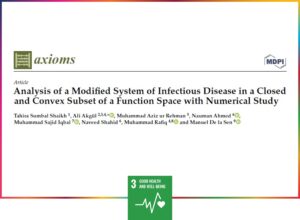
A scientific paper co-authored by a researcher Akgül from Near East University delves into the dynamics of the Ebola virus disease, offering a novel advective–diffusive nonlinear physical system. The study presents an innovative approach to understanding the dynamics of this deadly disease, incorporating advection and diffusion transmission of the virus at a constant rate, which previous models have overlooked. By considering both random and directed motions simultaneously, this model provides a more accurate representation of disease dynamics.
One of the key contributions of this work lies in the development of a numerical scheme that ensures positivity and other essential characteristics of the numerical solution. Unlike existing schemes that may yield physically meaningless negative solutions, the proposed scheme maintains positivity, making it a reliable tool for solving the nonlinear epidemic model. The study comprises two main analyses: optimal existence analysis and numerical analysis.
The optimal existence analysis establishes feasible solutions for the proposed Ebola virus epidemic model under certain conditions, utilizing Schauder’s fixed-point theorem within a closed subset of the Banach space. The inclusion of advection and diffusion terms with constant rates enhances the practicality and utility of the model, making it more applicable to real-world scenarios.
In the numerical analysis, the study computes numerical solutions using a well-known nonclassical finite difference template. The numerical scheme is structure-preserving, maintaining the same features as the continuous set of differential equations. The reliability of the numerical program is validated using the Von Neumann condition, ensuring non-negativity of solution variables through M-matrix criteria.
Numerical simulations demonstrate the effectiveness of the proposed scheme, yielding positive, bounded, and convergent solutions. The results obtained from different schemes are compared, highlighting the superiority of the proposed approach. Looking ahead, the study suggests possible extensions to higher dimensions and encourages further exploration of advection–diffusion terms in physical systems.
More Information:
https://www.mdpi.com/2075-1680/12/1/79